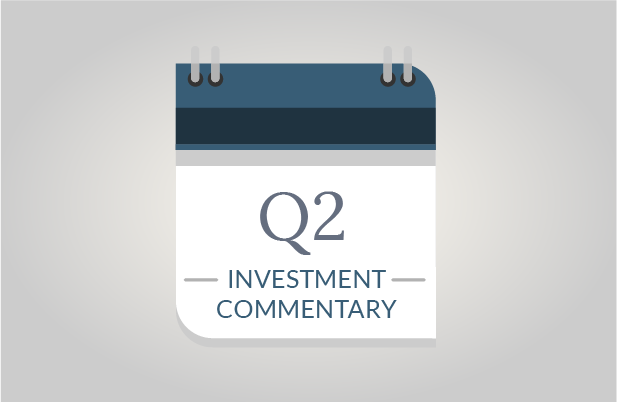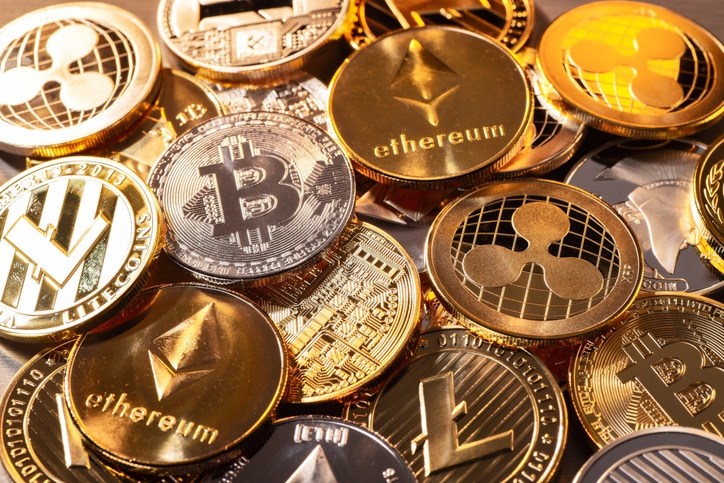- Our US economy is growing faster than we’ve seen it grow in decades.
- US vaccine availability is helping life return to pre-pandemic levels, but progress is slower internationally.
- Inflation is becoming an unpleasant side effect of growth.
A Positive Second Quarter on All Fronts
Momentum remained strong during the second quarter, for both the economy and for stocks. Our US economy is growing at a rapid pace, so fast that we’re encountering bottlenecks and shortages. Current expectations are that US economic growth in 2021 could exceed annual levels seen all the way back to the 1980s. After many years of trying to accelerate US economic growth, growth is now in abundance, perhaps to a greater degree than what companies and delivery systems can handle.
Stock prices reflect the dramatic economic recovery. The S&P 500 index ended the second quarter at an all-time high, up more than 14 percent for the year as of June 30th. This level of return is a highly respectable figure on an annual basis, let alone over a mere six months.
Domestically, growth is super-charged. Internationally, growth is getting better, but at a slower pace. This is due in large-part to slower vaccine availability to mass portions of the world population. International stocks posted respectable gains, albeit at more modest levels as compared to US stocks.
Bonds also improved during the second quarter, which was a pleasant surprise after a rough first quarter.
Stocks Are Soaring
The stock market has been on a tear since March 24, 2020. The tremendous growth in stocks was originally fueled by expectations of recovery. Now it is fueled by true strength in the economy. What’s very encouraging to see is the breadth of stock participation. Gains are no longer concentrated in a select number of names or market sectors. Ideally there’s ample good news and prosperity on the horizon to keep stocks growing. Vaccines are plentiful in the US and we’re slowly getting back to our pre-pandemic lives.
Looking globally, a recovery is underway, but not at the warp speed we’re seeing domestically. Expanding vaccine availability will ideally lead to greater economic and stock market growth internationally. However, there are many unknowns, particularly with the virus still spreading abroad, now causing some governments to reimpose restrictions.
We believe it’s important to remember that the stock market is forward looking. This allowed stocks to recover before the economy did. Conversely, a forward lens can also lead to stock declines even when things seem rosy. We think there’s ample room for growth, but risks do exist. These namely include spreading virus mutations and stocks growing to elevated valuations. We’re carefully watching growth in speculative investments such as cryptocurrencies and special-purpose acquisition companies (SPACs), also known as blank-check companies, which have issued a record amount of stock this year.
Inflation
A strong economy is wonderful, except for the unpleasant side effect of inflation. We’re seeing this side effect as inflation spiked in May at an annualized rate of 5%, the highest increase in inflation since 2008.
Many factors are contributing to inflation. Some are circumstantial whereas others are more systemic. Factors such as the ship blockage in the Suez Canal and the cyberattack on the Colonial Pipeline were point-in-time circumstantial effects. Conversely, other factors such as strong consumer demand, a tight labor market and the housing boom are more systemic. We look at these three key examples in greater detail.
Consumer Demand: An aura of enjoying life again with more consumption and more travel is certainly playing into inflationary pressures. Pent-up demand could easily sustain over an extended period of time after the world largely put “life on hold” during the pandemic. However, there is one key variable that could dampen consumer spending, the end of government stimulus checks, which have bolstered spending thus far.
Employment: The US has effectively returned to pre-pandemic employment levels. The strength of the economy has brought jobs back at a rapid pace, causing more demand for employees than there are available workers. Many people still haven’t returned to the workforce for health or family reasons. We also have an employee shortage because of fewer work visas being issued in recent years, particularly during the pandemic. The combined effects are pushing wages higher, which is translating into higher prices for goods and services.
We could see some stabilization in wage increases if more parents return to work when kids return to school this Fall, when unemployment benefits end and/or if more work visas become available.
Housing Boom: The housing market is on steroids thanks to low mortgage rates, demand for larger living space during the pandemic, low housing supply and heightened interest in vacation properties (likely also related to the pandemic). Home prices rose at the fastest pace in at least thirty years in April.
The housing market is a critical element of the broader economy as there are so many linked purchases. It’s not just the elements of building a home (lumber, appliances, tile, etc.). It’s also new furniture, electronics, and other belongings. A growing housing market naturally feeds the economy.
While the housing market could certainly continue to grow for some time, we ultimately think it will cool or correct. Buyers are quickly being priced out, potentially leading to prices plateauing. We also question the long-term demand for second homes post the pandemic, particularly as buyers realize the costs of carrying two homes. An eventual cooling in the housing market could certainly curtail inflationary pressures.
Bottom line, a number of variables are triggering inflation. We believe that some could begin to wane, but it’s impossible to know when. In the meantime, we find it important to note that not all defensive inflationary investments are panning out. TIPs and commodities are up in general, but gold is negative for the year and lumber prices have recently been slashed roughly in half from their highs. Those flocking to cryptocurrencies are also feeling a rocky ride given recent international regulatory actions and precipitous price declines.
Bond Yields Surprise Despite Inflation
Last quarter, we discussed how inflationary pressures pushed interest rates higher. Bond prices fell under pressure as bond prices move inverse to interest rates. Ironically, inflation spikes were substantiated by economic reports during the second quarter, but interest rates fell instead of rising (as many would have anticipated). In fact, the June 2021 Treasury auction drew the highest demand for Treasuries since July 2020, pressing interest rates lower and bond prices higher.
The bond market remains flush with liquidity between Fed asset purchases and an influx of foreign capital seeking yield. This could reverse in the future, but it’s currently a good reminder that trying to call the markets can prove you wrong, even when the answers seem astoundingly clear.
Looking Forward
Looking forward, we certainly hope that progress will continue globally for the benefit of human life and prosperity as we emerge from the pandemic. The strength of our US economy certainly gives us optimism, while remaining cognizant of risks. We encourage all investors to adhere to a portfolio mix that’s appropriate relative to your income needs, growth objectives and risk appetite.
As always, we invite you to contact us to discuss any questions about your investments and personal finances.
SageVest Wealth Management




